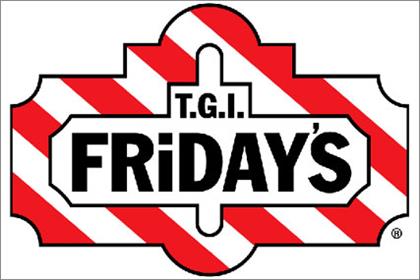L'année 2010 est-elle l'année où le commerce sur téléphone portable, ou "M-commerce", va exploser ? L'idée fait sourire Benoît Corbin, le président de la Mobile Marketing Association (MMA). "L'année où le M-commerce a explosé a déjà eu lieu : c'était l'an dernier, s'amuse-t-il. On est sur un business qui est déjà parti." Et, en effet, les chiffres sont impressionnants, notamment outre-Atlantique : eBay, le géant des enchères en ligne, tablait pour 2010 sur un milliard de dollars de ventes effectuées sur mobile. A trois mois de la fin de l'année, il a revu ses prévisions à la hausse, à deux milliards de dollars. Et estime que d'ici 2014 c'est 40 % de ses ventes qui se feront par l'intermédiaire d'un terminal mobile.
Pour autant, le M-commerce est loin d'être la solution miracle ou le nouvel eldorado pour toutes les entreprises. "Les transactions via le mobile ne décollent pas aussi vite qu'on pourrait s'y attendre", relativise Alain Laidet, le commissaire général du salon E-Commerce Paris, qui s'est ouvert ce mardi au Parc des expositions de la porte de Versailles. "Mais la démocratisation des smartphones change la donne, avec des interfaces digestes, des applications riches… Ce n'est d'ailleurs pas un hasard si des poids lourds du commerce sur le Web comme eBay et PayPal ont lancé leurs applications cette année."
Mais les applications mobiles ne sont pas non plus une panacée. Entre l'iPhone, Android, Bada, BlackBerry et Symbian, développer des applications pour tous les supports et les maintenir à jour peut rapidement tourner au casse-tête. C'est cependant un mal nécessaire, juge Laurent Bourgitteau-Guiard, le directeur général de Snapp' (ex-Business Everywhere), une entreprise spécialisée dans la création et la gestion d'applications commerciales et autres cartes de fidélité numérique. "Il faut sortir du 'tout iPhone'. L'iPhone est une bonne source de retours sur investissement, mais ce n'est pas un bon outil pour toucher un marché de masse. Il ne faut pas oublier que ce n'est qu'une partie du marché des smartphones, et que les téléphones d'anciennes générations représentent encore aujourd'hui plus de 60 % du parc français."
Une vision partagée par Benoît Corbin, pour qui les applications ont contribué à stimuler le marché, mais conservent de nombreux défauts : "90 % de la demande auprès des développeurs concerne des applications ; les entreprises sous-estiment souvent les avantages des sites mobiles, qui sont adaptés à toutes les plates-formes et ne nécessitent donc pas le même investissement. Nous pensons qu'à terme le marché va se rééquilibrer, et que l'application ne sera plus le choix par défaut." La dernière version du langage HTML, le HTML 5, qui permet notamment de créer des sites plus interactifs et plus esthétiques, devrait contribuer à gommer la différence entre l'application et le site mobile, d'autant plus que le rendu sera similaire sur la plupart des navigateurs mobiles.
Le nombre de téléphones disposant d'une connexion à Internet, qu'il s'agisse de smartphones ou non, dépasse cependant aujourd'hui les 50 % des mobiles utilisés en France. Un taux suffisamment élevé pour permettre aux commerçants d'expérimenter de nouveaux outils de marketing, de fidélisation ou de suivi, comme des cartes de fidélité qui se mettent à jour en temps réel, ou des applications qui envoient des notifications à chaque nouvelle promotion.
Surtout, le mobile permet une personnalisation accrue des offres. "On peut aujourd'hui proposer des applications qui agissent comme un filtre entre les offres, ce que je souhaite et où je suis : on obtient alors quelque chose de puissant", détaille Laurent Bourgitteau-Guiard. Dès lors, il devient possible de signaler au client potentiel qu'il y a en ce moment en rayon une paire de chaussure à sa taille, dans un magasin situé tout près, et qui est actuellement en promotion… "Si on ne s'adapte pas au contexte de l'utilisateur, ça ne sert à rien de faire du mobile", juge Laurent Bourgitteau-Guiard. "Il faut pouvoir intégrer les trois paramètres de temps, de géolocalisation, et de personnalisation pour que cela soit vraiment efficace."
De fait, tous les produits et tous les services ne trouveront pas le même écho sur mobile. Si l'application eBay connaît une très forte croissance, c'est aussi parce que le rythme des enchères, qui nécessite de se connecter régulièrement, est parfaitement adapté à la consultation sur mobile. A l'inverse, les écrans mobiles restent peu adaptés, même sur les smartphones, à une consultation longue de catalogues classiques. "L'atout du mobile, c'est de faire le lien entre le monde réel et le virtuel : comparer des prix dans un magasin, se connecter pour vérifier une enchère lorsqu'on est en déplacement ou acheter un billet de train sur le chemin de la gare", précise Benoît Corbin. Au final, il n'existerait donc pas un seul "M-commerce", mais plutôt une myriade de services, allant de l'achat direct au comparatif en passant par l'outil de fidélisation.
Si la plupart de ces services existent aujourd'hui, notamment dans les pays anglo-saxons, de nombreuses pistes restent à explorer. Les grandes enseignes lorgnent notamment du côté de la réalité augmentée, dont le potentiel est gigantesque. Des applications comme Layar permettent déjà d'utiliser son mobile comme un filtre pour lire les annotations déposées par des internautes sur des objets du monde réel ; demain, elles intégreront peut-être également les promotions ou les disponibilités en stock d'un produit lorsque l'utilisateur se promènera dans les rayons de son magasin favori.
Le Monde 21.09.10



